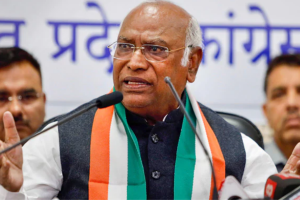As this Himalayan region of Jammu and Kashmir faces scarcity of drinking water due to a prolonged dry spell, the government has announced free water supply in the affected areas through mobile tankers here.
The summer is yet to come but many areas in the Jammu region and the Kashmir valley are in the grip of a drinking water crisis.
Advertisement
Some areas of South Kashmir’s Anantnag district are facing drinking water scarcity as the natural Achhabal spring has dried up. The spring and the Aripath rivulet are the source of drinking water in at least a dozen villages.
Minister for Jal Shakti, Javed Ahmed Rana, announced “We will provide free of cost water through tankers to areas which are facing shortage.” The minister held a high level meeting to discuss the situation and steps to meet the crisis and stressed speeding up of water supply schemes under the Jal Jeevan Mission.
Reports indicate that it was also not a happy situation in the Ladakh UT and the mountainous areas of J&K UT where glaciers are melting due to the warm weather. Three glacial lakes in the Kishtwar district of Jammu are constantly expanding due to melting of glaciers. This phenomenon is threatening the villages downstream and also a number of upcoming hydroelectric projects along the Chenab River.
The administrations of Ladakh and J&K are constantly keeping a watch over the situation as glacial lake outburst floods (GLOFs) have become a major threat in the two regions. A recent study indicated 78.7 per cent expansion of glacial lakes while the feeding glaciers have receded by 13.2 per cent over the years.
The Government has constituted a Focused Glacial Lake Outburst Flood Monitoring Committee with the aim to review the current status of glacial lakes and identify the vulnerable ones in terms of GLOF. The committee has been asked to suggest best technical measures to minimize the glacial threat in identified glacial lakes.
The Ladakh administration has prohibited digging of new borewells with a view to regulate groundwater usage after nine areas in Leh district, including Leh town, were classified as “semi-critical” for groundwater extraction.
Leh’s deputy commissioner has declared borewells without prior approval in restricted areas such as Gonpa Gangles, Sankar, Yourtong, Leh, Skara, Choglamsar, Saboo, Spituk, Phay, and Phyang as illegal.











